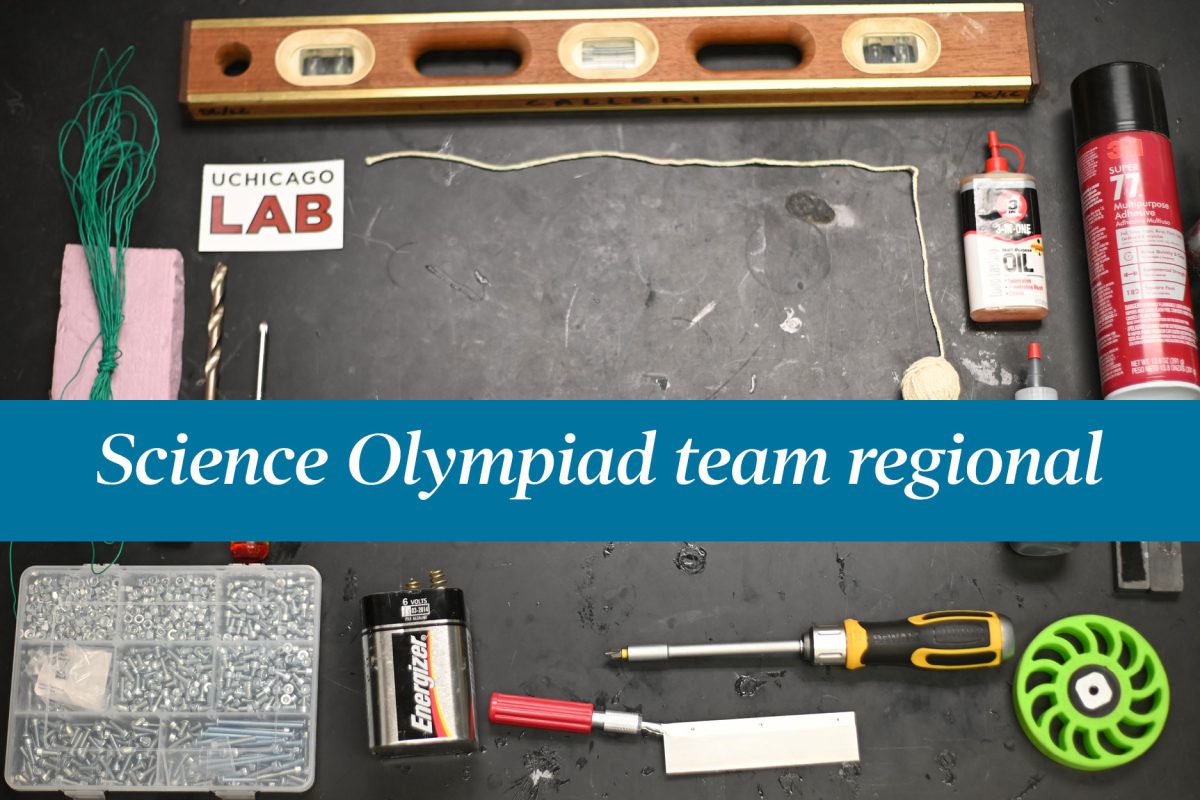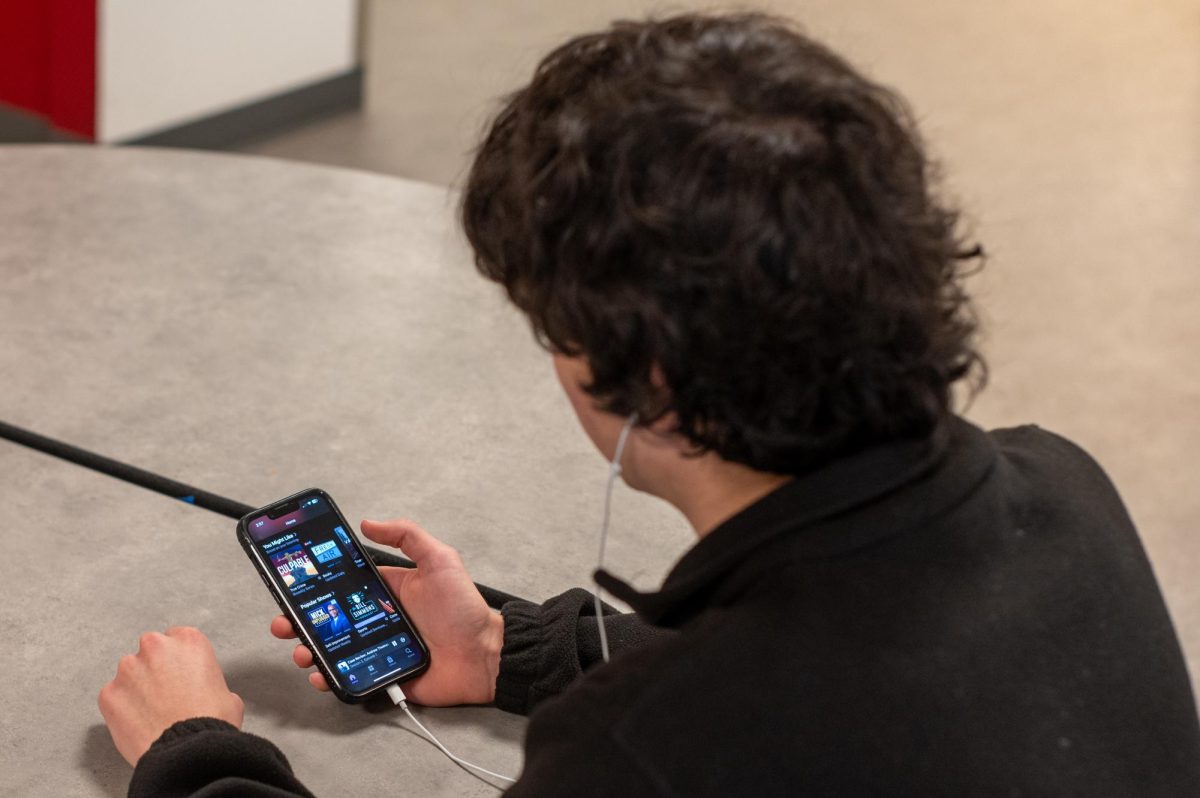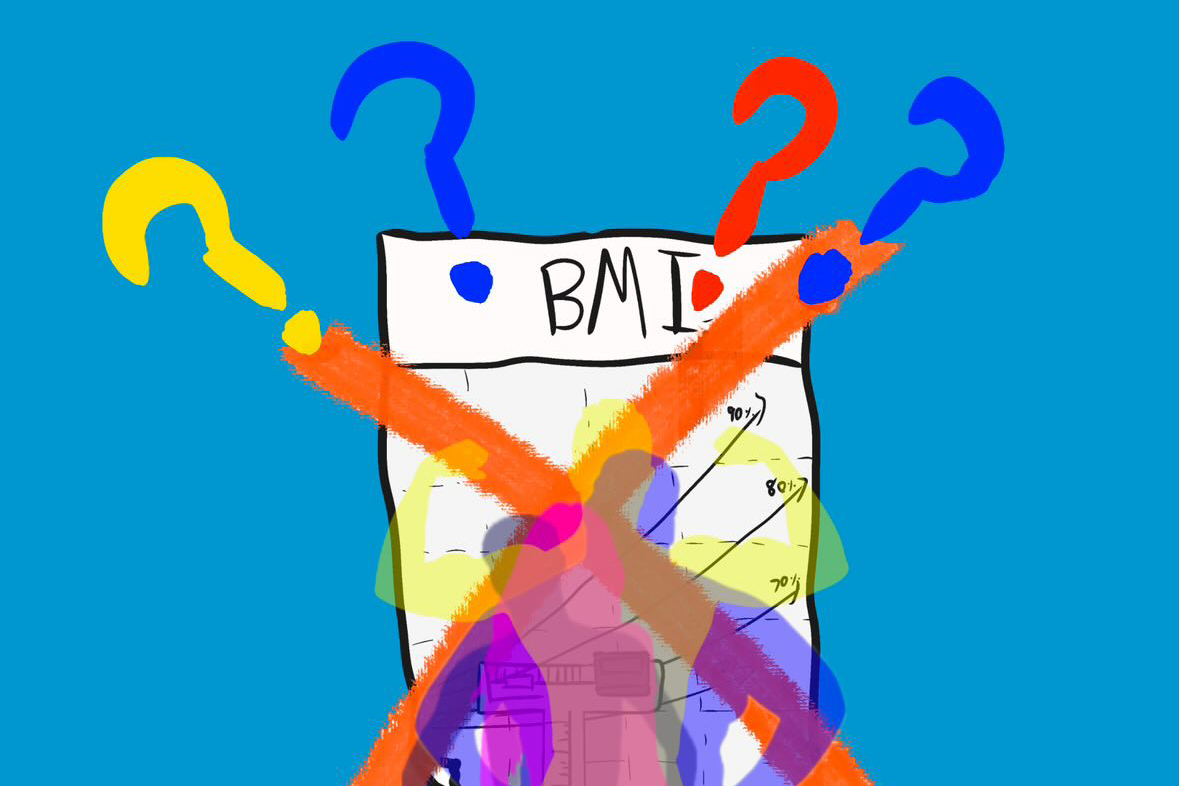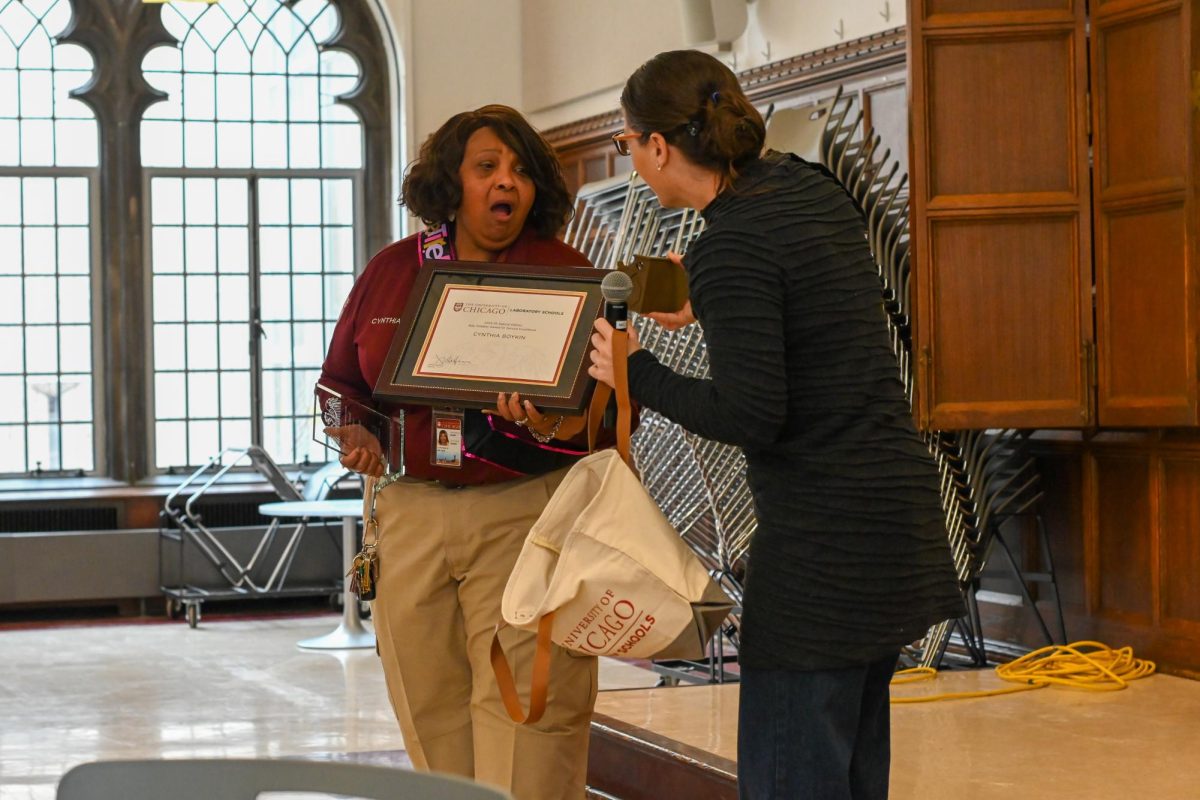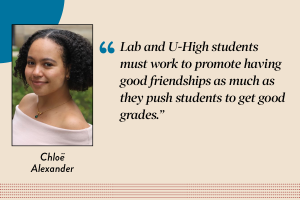Lab teacher honors father with exhibit
September 28, 2022

At one point in the cardboard boxes shuffled from home to home were medals, high school yearbooks, collections of paintings and print-outs of research papers: souvenirs from a successful art historian’s life. Now, his belongings are beautifully displayed behind glass boxes at the University of Chicago.
The art historian Paul B. Moses lived an extraordinary life, from overcoming barriers as the first African American student to attend Haverford College to eventually becoming a successful art historian at the University of Chicago, with countless milestones hit throughout the journey. He was fatally shot on March 24, 1966, at age 36.
His son, Michael Moses, is a U-High alumnus and a longtime P.E. teacher at U-High who lost his father at age 3. On a mission of getting to know his father, Mr. Moses began opening up the boxes laying around with his father’s belongings. Now, Mr. Moses, along with Stephanie Strother, a Ph.D. student in art history at the University of Chicago, has compiled his father’s belongings into an exhibition at UChicago’s Joseph Regenstein Library through Dec. 16.
The exhibition, “Paul B. Moses: Trailblazing Art Historian,” holds two stories: one of how Paul B. Moses’ life and career came together, and one of the journey behind putting together the gallery. The creation of the exhibition served as a path for Lab’s own Mr. Moses to learn who his late father was, from his childhood to his work.
The gallery is arranged in chronological order of Paul B. Moses’ life with displays showing his early life through school yearbooks, his time in the army as a soldier through images, and his life at the University of Chicago through his research papers. It goes on to show his passion for art through copies of his art criticisms and his own artwork, his success in his later career through displays of his awards, and lastly, a display of newspapers from the day his death was announced accompanied by condolence letters from both friends and strangers.
The idea for the exhibition was rooted in Mr. Moses’ goal to learn more about his father.
“I think the hurt and the grief was too much for [my family], so they never really talked to me about him, and I didn’t have the courage to ask my mom because I was afraid it would open up old wounds, so pretty much all my life I never knew who he was,” Mr. Moses said.
In the process of moving multiple times, he shuffled around through boxes that had his father’s name on them.
“As time went on, I’m in the process of thinking that I’ve got all these paintings, I’ve got a story, so I need to see what’s in these boxes,” he said.
He then met Ms. Strother in 2019, who introduced herself as an art history student, and decided there was no better time to open up the boxes and begin the project with her. Their proposal to the Regenstein Library was approved in April 2020.
According to Mr. Moses, he achieved his mission.
“Through all of this, I’ve been able to get to know my father, through all the research and what’s in those boxes,” he said. “At this point, I truly feel like I know who he was, who he is, and more of what he would’ve been in the future.”
Mr. Moses said there was an unexpected emotional aspect of putting the exhibition together.
“The condolence letters were hard. The personal letters, I read every one of those, six of those being in the exhibit,” he said. “Through the process, there were some emotional and touching things that jumped out at me here and there, and I really didn’t think I would get emotional in the process of going through the items.”
Mr. Moses wants people who visit the exhibition to learn about an incredible leader and to understand Paul Moses’ life, and the significance it held.
“We hear about many great African American pioneers throughout the ages, and I think he’s worthy to be in that group of great pioneers,” Mr. Moses said. “That’s where the ‘trailblazing’ in the exhibition title comes from.”
To Mr. Moses, separating himself from the exhibition is important, since he believes the exhibition is shaped by his father. “Overall, I want people to think of a person who is brought back to life who knew his profession, was an excellent professor, was a short-lived excellent father, amazing person, and learn what he was like as a whole,” Mr Moses said. “This is not about me for other people, it’s about him.”
Mr. Moses believes that through this experience, he’s gone from a novice in exhibition-making to understanding the process. Even though he didn’t get it right away, patience always pays off — and with that mindset, he’s embarked on a wonderful journey of finally getting to know who his father was.
He said, “If somebody today were to ask me, ‘tell me about your father,’ now, I can do that.”







